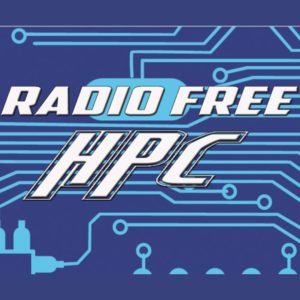 In this podcast, the Radio Free HPC team looks at how Lawrence Livermore National Lab is working to simulate and help modernize the electric grid. They discuss how the ‘new grid’ will need to be two-way, both delivering and accepting electricity. The new grid will also have to communicate with smart homes and other buildings in order to predict demand and adjust real time pricing.
In this podcast, the Radio Free HPC team looks at how Lawrence Livermore National Lab is working to simulate and help modernize the electric grid. They discuss how the ‘new grid’ will need to be two-way, both delivering and accepting electricity. The new grid will also have to communicate with smart homes and other buildings in order to predict demand and adjust real time pricing.
When the discussion turned to solar power, Henry related the problems of low payouts from utilities to consumers who have installed solar panels. Dan pointed out the current shortfalls in solar power, bringing up an example of the world’s largest solar plants still not generating enough juice to power the NYC subway system. Henry called Dan a dirty liar and an embarrassment to his family. Dan provided the following links to justify his take:
- On an annual basis, the NYC subway system uses 1.8 billion kilowatt hours.This is according to NYCsubway.org. This is 1,800 megawatts of electricity.
- According to an article published by Origin Energy on 10/24/18, the largest single location solar field is located in India and generates 648 MW of electricity. This is obviously less than the 1,800 megawatts necessary to power the NYC subway. Dan is vindicated.
Next up, they discuss some of the applications that are being run on the Summit supercomputer, the world’s largest system. Some of the applications include exploring the origin of the universe and whole-cell simulation, along with a host of other stuff. Our discussion strays into the recent announcement that scientists in Israel have supposedly cured cancer. This claim has since been debunked, or at least partially debunked…leaving it barely bunked at all. As the conversation strays even further, Shahin suggests putting a giant mirror behind the sun in order to give us more solar energy. One hell of a good idea.
Catch of the Week
- Shahin’s Catch of the Week starts as a mix of buzzwords combined together but clarifies itself (a bit) through explanation. What he’s talking about is a paper titled “Semi-device-independent quantum money with coherent states” that discusses using quantum computing to create unforgeable quantum banknotes and credit cards – definitely a good thing.
- Dan’s Catch of the Week is the dust up between Apple and Facebook and how the two goliaths have become embroiled in a slap fight. In the ensuing discussion, Dan coins the phrase “if you’re not paying for an app, it’s a virus.” The gang also points out Facebook’s naiveté (whether it’s real or put on) when it comes to user privacy issues. Dan, warming to the topic of tech giants controlling our lives, brings up the example of Microsoft’s new “Newsguard” browser feature that passes judgement on whether news sites are credible or nor credible. Newsguard is a browser extension that users can activate on new versions of Microsoft’s Edge browser. Here are a few representative discussions about Newsguard and possible implications: Gizmodo, Publishing Insider, and Breitbart.
- Shahin believes that Newsguard is an AI fueled tool, which, upon further research, turns out to be incorrect. Newsguard uses ‘trained journalists’ to review and rate thousands of news and information websites. After a little more desultory conversation, the podcast ends on this disquieting note.




